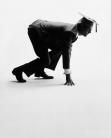Classical Structural Theory
Classical Structural Theory :
By way of illustration, in this document we will describe and explain the classical structural theory as presented by Max Weber. To highlight the advantages and disadvantages of this classical structure as used in a realistic modern organization we will apply this theory as used today in our public police department.
As per this theory a person is hired for their technical expertise rather than on the recommendation of a connection from within the company. Generally these people are more inclined to work in very well-defined process oriented positions. Employees are given titles in which the authority to perform specific duties are vested. Outside of the defined position the employee has little or no authority.
Lines of authority and positions are clearly defined by formally established rules and regulations that help to ensure uniformity of operations, and provide for continuity of business as well as making responsibility easy to place. In his 10 points Weber implied that procedures imposed on all who fall within their reach are formal and impersonal (Pace & Faules, 1994, p. 30-31). In addition to these procedures, It is suggested that an attitude of discipline is an integral part of the organization that wants to promote efficiency (Pace & Faules, 1994, chapter 3). They are intentionally designed without attention to personal or emotional considerations to prevent distortion of employees' rational judgment in carrying out their assigned duties. Employees working in a classically structured organization are encouraged to maintain distinction between their private and professional lives. The last tenet of Max Weber's theory involves security and advancement. He held that security in a position was gained by tenure. For motivated individuals who want to advance their careers, hard work and achievement are viewed in this type of organization as the best way to develop a good rapport with the supervisor. Because responsibility is so easily laid on individuals, awarding recognition on an individual basis is the rule.
In today's society, even as we progress from the so-called Industrial Age to the Information Age, such organizations still exist. The police department is a high visibility organization that continues to utilize the ideas founded in classical theory. Potential officers are given a series of tests, both physical and mental, which determine to a great extent their probability of being hired. In line with Weber's work, each position in the department has a title which is representative of their level in the hierarchy (Pace & Ferules - 1994, p. 30-31). Strict self-discipline is praised and there are many policies in place to ensure that rational judgment is maintained. The most common way to advance in the police department is through time on the job. Seniority, especially when combined with competency, is given a great deal of weight. Maintaining the premise that authority is vested not in a person but in the position, when an officer leaves the force he or she loses the power to chase criminals through red lights, arrest drug lords, and perform other duties for which the authority rises out of the position once held.
Advantages of Classical Structural Theory
The opinion that easily identifiable structure and tightly managed rules and regulations are advantageous in public organizations is widely held. Structure and policy are of tremendous interest to all those interested in the uniformity and continuity of public safety.
The advantages of the classical structure within our example have multiple impacts on how the organization operates. As affirmed by Frederick Taylor, with a clear and concise reporting path we can visualize how the police department utilizes this in their daily operations (Pace & Faules, 1994, p. 32-33). In a crisis situation it is imperative that the police department work in a unison direction with as little verbal interaction as possible. This allows partners to communicate with a structural nonverbal direction. Strict rules guiding the behavior of officers on duty help to protect the public from officers acting out domestic aggressions at work. In this way, the separation of private and professional lives is a distinct advantage.
Disadvantages of Classical Structural Theory
Despite the many advantages associated with this type of arrangement within the police department, a number of disadvantages also exist. For employees, goals of advancement maybe slow to realize due to the tenure required to obtain various levels in the hierarchy. In addition to tenure, employees of the police department are also limited by budget restraints and number of employees needed to provide an acceptable level of service. For the public, the rules and regulations followed by officers leave little room for consideration of individual circumstances.
Conclusion
As a result of several years of this type of structure, and the culmination of several high tech jobs in the market place, many companies are beginning to move away from this type of organization. Companies have come to realize that employees' personal goals and environment are critical to their work performance, which classical structure tends to stagnate. Thus, it is the consensus of the group that classically structured organizations should start to examine the impacts that a more subjective approach to organizing may have on their specific organizations.
Classical Structural Theory - Classical Structural Theory - Classical Structural Theory
More Essays on Philosophy
Classical Structural Theory :
Classical Structural Theory To HOME PAGE

Related Links : Classical Structural Theory